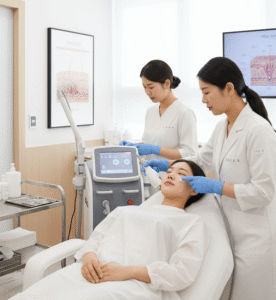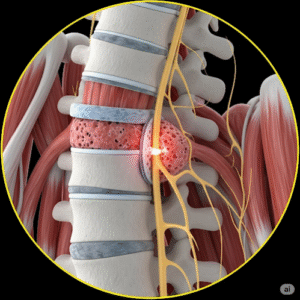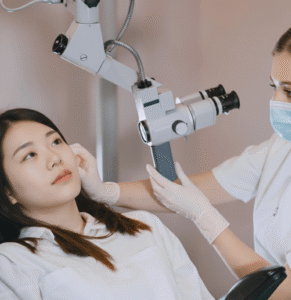Overview
Cyanosis is a medical condition characterized by a bluish or purplish discoloration of the skin, lips, or nails due to low oxygen levels in the blood. It can indicate an underlying respiratory, cardiovascular, or hematological problem and requires prompt evaluation. In South Korea, advanced diagnostic facilities and emergency care ensure timely management of cyanosis and its underlying causes.
What is Cyanosis?
Cyanosis occurs when deoxygenated hemoglobin in the blood exceeds normal levels, leading to a bluish tint in peripheral tissues. It can be central, affecting the lips and tongue (indicating systemic oxygen deprivation), or peripheral, affecting extremities like fingers and toes (often due to local circulation issues).
Symptoms
- Bluish or purplish discoloration of lips, tongue, or skin
- Shortness of breath or rapid breathing
- Fatigue or weakness
- Chest pain (if related to heart problems)
- Cold extremities (in peripheral cyanosis)
- Dizziness or fainting in severe cases
Causes
- Respiratory issues: Chronic obstructive pulmonary disease (COPD), asthma, pneumonia
- Cardiac problems: Congenital heart disease, heart failure, pulmonary embolism
- Hematological conditions: Methemoglobinemia, polycythemia
- Environmental: Cold exposure leading to reduced peripheral circulation
- Other: Severe infections or shock
Risk Factors
- Congenital heart defects or chronic lung disease
- Smoking or exposure to environmental pollutants
- High altitude or reduced oxygen environments
- Blood disorders affecting hemoglobin
- Family history of cyanotic conditions
Complications
- Tissue hypoxia and organ damage if prolonged
- Respiratory or cardiac failure in severe cases
- Cyanotic heart disease complications
- Impaired physical and cognitive development in children with chronic cyanosis
Prevention
- Manage underlying respiratory or cardiac conditions
- Avoid smoking and environmental toxins
- Regular medical check-ups for congenital or chronic conditions
- Prompt treatment of infections or respiratory issues
- Use supplemental oxygen when prescribed
Treatment Options in Korea
South Korea provides advanced care for cyanosis through hospitals, clinics, and specialized centers:
- Diagnosis
- Pulse oximetry to measure oxygen saturation
- Blood gas analysis for precise oxygen and carbon dioxide levels
- Echocardiography for congenital or acquired heart issues
- Chest X-ray or CT scan for lung-related causes
- Medical Management
- Oxygen therapy for hypoxemia
- Medications for underlying cardiac or respiratory conditions
- Treatment of infections, anemia, or blood disorders contributing to cyanosis
- Surgical Intervention
- Corrective heart surgery for congenital defects
- Vascular surgery for circulation issues
- Procedures to remove obstructions in the lungs or heart
- Supportive Care
- Continuous monitoring in ICU for severe cases
- Rehabilitation and oxygen therapy for chronic cyanosis
- Education and counseling for families of children with congenital cyanotic heart disease
- Specialized Centers
- Severance Hospital and Samsung Medical Center have dedicated cardiology and pulmonology units
- Pediatric cardiology centers provide comprehensive care for children with congenital cyanotic heart disease













